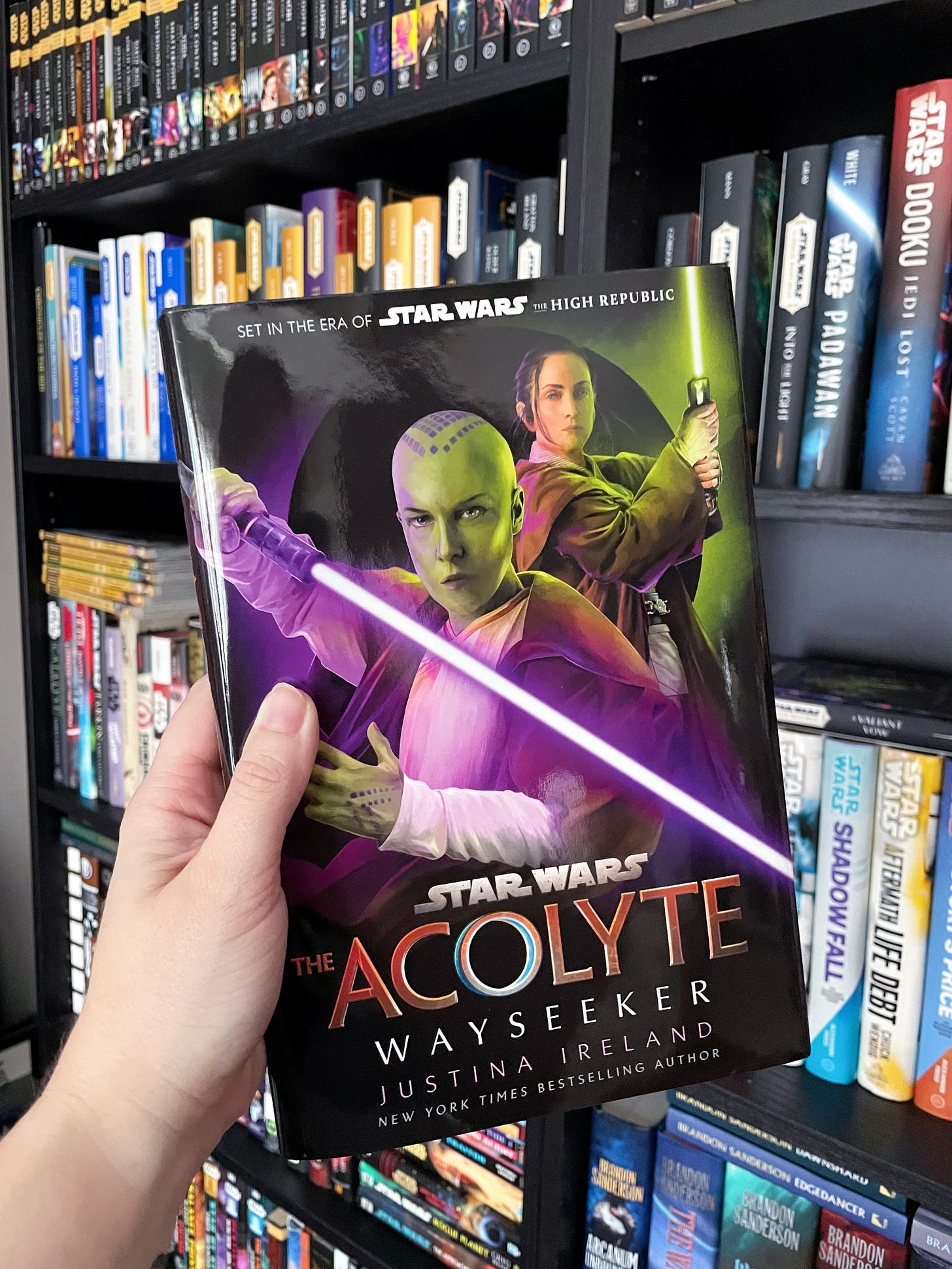‘The Acolyte: Wayseeker’ review: Lost faith, bittersweet hope, and captivating character studies
The new Star Wars novel by Justina Ireland delivers more of Vernestra Rwoh's story with a surprisingly shallow plot and heaps of High Republic callbacks.
I’ll be honest — Vernestra Rwoh was not one of my favorite High Republic characters. I didn’t dislike her, and I even related to her on many levels, especially those related to the pressure she felt to be the best Jedi at such a young age. My admiration for her faltered with some of the decisions she made and the way she talked to people. I questioned why she took the trials to become a Knight at just 15 and then soon after took on a Padawan. Why did she keep pushing herself to do more? Why didn’t she take time to hone her skills and experience as a Knight before mentoring an apprentice? And then I remembered what I felt as a teenager — among the top students in my class, attending college classes while still in high school, working nearly full time, and tying much of my self-worth to my academic and career accomplishments. I realized I didn’t much like Vernestra because she was too much like me.
Don’t worry, this review isn’t entirely about my self-realizations of the keen reliability of Star Wars characters. But it’s important to note just how much my opinion of this character changed while reading The Acolyte: Wayseeker by Justina Ireland — out today, May 6.
The novel is set a couple of decades before The Acolyte and many more decades after the end of the High Republic books. As a long-lived Mirialan, Vernestra is over a century old in Wayseeker. She fought and survived the years-long Nihil conflict and carries with her even more trauma that we haven’t seen since then. In this era, she’s a Wayseeker — what I like to think is a Jedi with healthy boundaries — but still one of the most powerful and talented Jedi in the entire Order. She’s highly confident and competent, but never arrogant, and still lives by the tenets instilled in her by her master, Stellan Gios.
Ireland created Vernestra, who debuted way back in A Test of Courage, the first middle-grade novel in the High Republic. Throughout the publishing initiative, Vernestra mainly starred in middle-grade and young adult novels. In Wayseeker, Vernestra is very much an adult, and Ireland boldly continued her story in first-person perspective. I was wary at first, especially because the other POV — Indara — was told in third person. But it was absolutely the right move to share Vernestra’s inner monologue and feelings about herself, Indara, and the Order.
Through Vernestra’s perspective, we get a glimpse at how much the conflicts in the High Republic novels changed the Jedi Order and its relationship with the Republic government and citizenry. The Order in Wayseeker is much closer to the organization we see in the prequels. Vernestra is very unhappy with how the Order operates, and for much of the novel, believes there wasn’t anything she alone could do to change things. By the time of The Acolyte, Vernestra is a top leader in the Order who acts as a liaison between the Jedi and the Senate. Wayseeker illustrates the journey she went on to get there.
A big part of that journey is Indara, a young Jedi Knight who is far from the confident and assured Jedi Master we see in The Acolyte. In Wayseeker, Indara is in her mid-20s and has spent the last year holed up in the Jedi Archives after a traumatic event in the field. She’s wary about going on missions out in the galaxy again — a stark, interesting contrast to Vernestra, who firmly believes all Jedi should be spreading the light away from Coruscant.
Even with her ongoing healing journey and insecurities stemming from how her master treated her (constant criticism and little praise), Indara is a smart and talented Jedi. Wayseeker is firmly about these two Jedi and how their differences grow into mutual respect, admiration, and understanding. They both dislike each other right off the bat, but quickly begin to realize how they could benefit from each other’s perspective. Shoutout to Master Yaddle for bringing these two together, even if the diminutive Jedi was far from clear with her intentions.
I also deeply related to Indara, making it that much more frustrating that we saw so little of her in The Acolyte.
Wayseeker is an incredible character study about lost faith and bittersweet hope. There are challenging and intense conversations about what it means to be a Jedi and how that differs around the Order. And like all great Jedi-focused stories, there’s commentary on attachment and how the Order’s views on it have changed and warped over the centuries. It’s important to have stories like this and the High Republic, no matter if we know how it all ends for the Jedi. It’s incredibly important to show the Jedi at their prime and in their waning years — and all the big and small ways they changed for the better and worse.
That’s the core of Wayseeker, and I’d give it five stars solely for the characterizations of Vernestra and Indara, as well as the lovely, juicy callbacks to the High Republic. However, I bumped the book down one star because of the plot.
Wayseeker explores the two Jedi’s investigation into a strange device that can short out lightsabers and blasters. The nullifier isn’t a novel invention, but the Jedi and Republic worry about a new variation being mass-produced and put into criminal hands. The device actually stems from a small plot thread established in The Rising Storm, and gets a tidy but not super satisfying conclusion in Wayseeker. Despite the device’s danger, the story is pretty low-stakes. Instead, the plot serves the purpose of putting the two main characters in situations where they must work and learn together and overcome their insecurities, doubts, and fears.
It’s clear Wayseeker was written with the idea that there would be more seasons of The Acolyte. The novel has many more nods to the High Republic stories and characters than it does to the Disney+ show, which I’m not mad about, but because of that, it reads more like a High Republic epilogue than an Acolyte novel. Vernestra hints at so many experiences that shaped her in the decades after the Nihil conflict, but the book never elaborates (it shouldn’t have to, since those stories would be better told through the show). And, once again, I’m incredibly sad these characters won’t get the ending they deserve.
Still, Wayseeker is an excellent Star Wars book. The novel feels like it was written just for me and everyone else who’s been invested in the High Republic for the last four years. It’s engaging and thought-provoking, and nicely bridges the gap between the High Republic and The Acolyte, still with plenty of room for more stories. As I’ve been saying with every new High Republic book I finish, the ending is satisfying but bittersweet.
I can only hope, desperately, that Wayseeker and The Crystal Crown (July 29) aren’t the last stories we get in the era of The Acolyte.
Rating: ⭐⭐⭐⭐.5/5
Star Wars: The Acolyte: Wayseeker by Justina Ireland is available now from Random House Worlds.
Coming later this week: A review of The High Republic: A Valiant Vow by Justina Ireland



